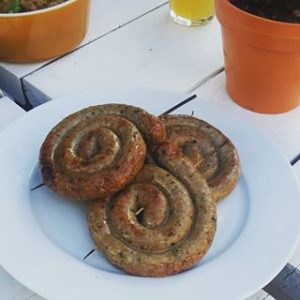
Can you make plum jam with Japanese plums? Of course! However as we’ve discussed several times this season, when you cook the flesh of Prunus salicina some powerful sour flavours develop.
Out of hand the flesh of a Japanese plum is so mild you might consider dialling back the sugar for a jam recipe. You definitely should not! First, the sugar is essential for the mixture to actually “jam” or set, but also that generous dose of sweetness balances the acidity that is unleashed during cooking. I ended up using the same ratio I use for raspberry jam: 2:1 fruit to sugar. Even with this high sugar content, the jam is quite tart. We noticed that of our two … Continue reading.







 Goualsh is a beef stew originally from Hungary but eaten all over Central Europe. It is the kind of preparation that Europeans will fight to the death over. Matters like whether it is properly called a stew or a soup, whether it contains tomatoes, or potatoes, or what starch it is served with (if any) often become violent. It is estimated that 12 Europeans are killed every year in goulash-related arguments.[1]
Goualsh is a beef stew originally from Hungary but eaten all over Central Europe. It is the kind of preparation that Europeans will fight to the death over. Matters like whether it is properly called a stew or a soup, whether it contains tomatoes, or potatoes, or what starch it is served with (if any) often become violent. It is estimated that 12 Europeans are killed every year in goulash-related arguments.[1]
